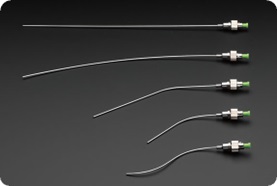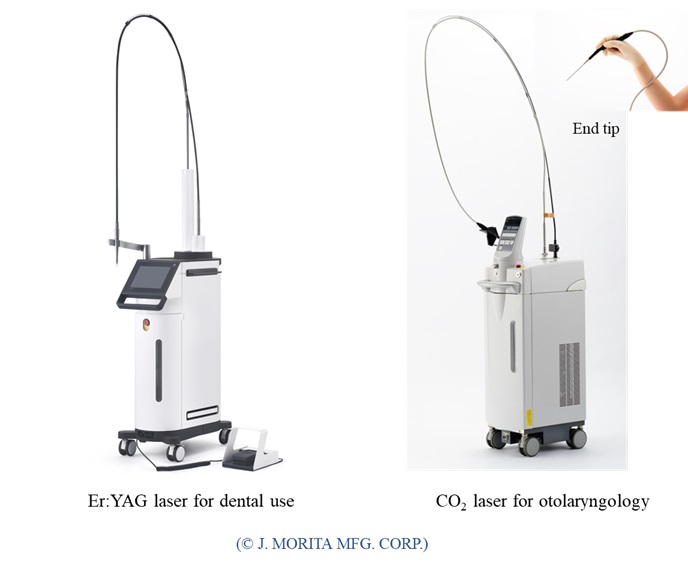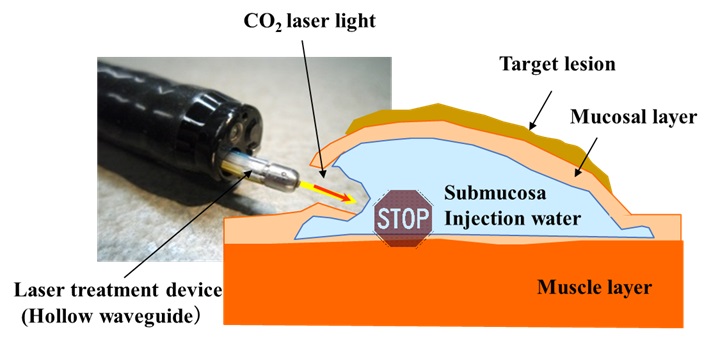Hollow waveguides


Flexible hollow waveguide using silica glass capillary
Ridid laser probe with metal pipe
Flexible hollow waveguides generally use a silica glass capillary as the base material, with thin metal and dielectric films on the inner wall.
Rigid hollow waveguides made of short metal pipes are also used as laser tips or probes connected to the output end of a flexible waveguide.
Laser therapy equipments

Hollow waveguides are used as infrared laser light transmission lines for Er:YAG laser beams (wavelength: 2.94 μm) and CO2 laser beams (wavelength: 10.6 μm), for which quartz optical fibers cannot be used. The oscillation wavelength of the Er:YAG laser matches the peak wavelength of the absorption spectrum of water, making it suitable for cutting hard tissues such as teeth, and it is mainly used in dental treatment equipment. On the other hand, CO2 lasers are suitable for cutting soft tissues while having a hemostatic effect, and are mainly used in otorhinolaryngology. A metal tip is attached to the tip of the flexible waveguide, which is also a hollow waveguide.
Application to endoscopic laser treatment


Application to ESD (Endoscopic Submucosal Dissection)
CO2 laser irradiation to porcine bowel - Movie -
The CO2 laser light is transmitted through a hollow waveguide, and its application to endoscopic submucosal dissection (ESD) was investigated as an energy device that can replace an electrocautery scalpel. ESD is a minimally invasive treatment for early-stage gastrointestinal cancer. The laser beam is emitted straight from the tip of the instrument, and the incision can be made without contact while accurately specifying the direction of the incision, making it easy to grasp the situation of the treated area.
Application to temperature measurement

Temperature measurement in a small area using a metal tube probe
According to Planck's radiation law, the peak wavelength of the spectral radiance of infrared radiation emitted from a heating element shifts to the longer wavelength side at lower temperatures. At room temperature, the peak wavelength is approximately in the 10-μm band, making it difficult to measure the radiation temperature at relatively low temperatures from room temperature to several hundred degrees Celsius with a quartz fiber. The hollow structure of the waveguide has a small angle of incidence or divergence of the emitted light, making it suitable for probes to detect the temperature of small areas in close proximity or to capture distant heating elements with a narrow viewing angle.